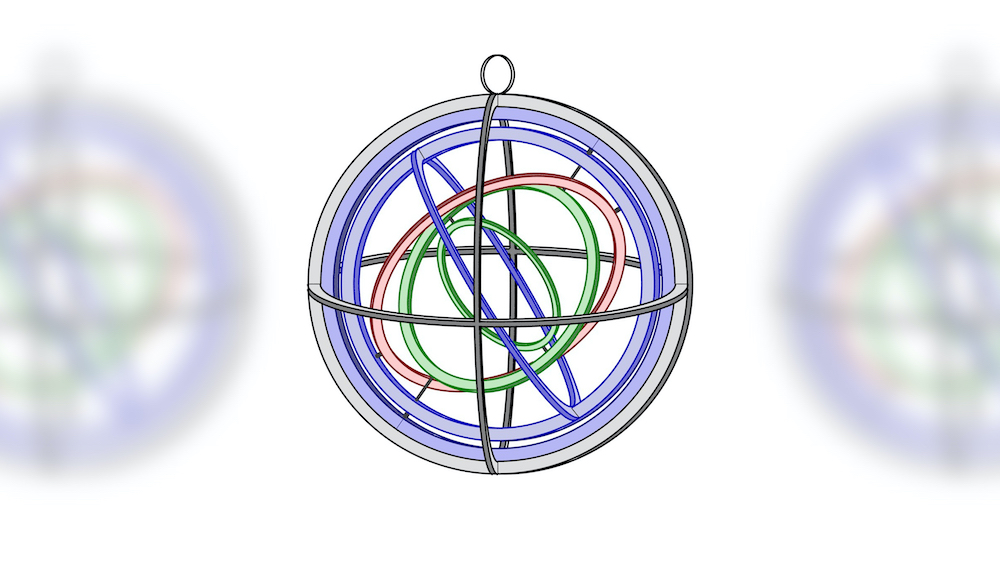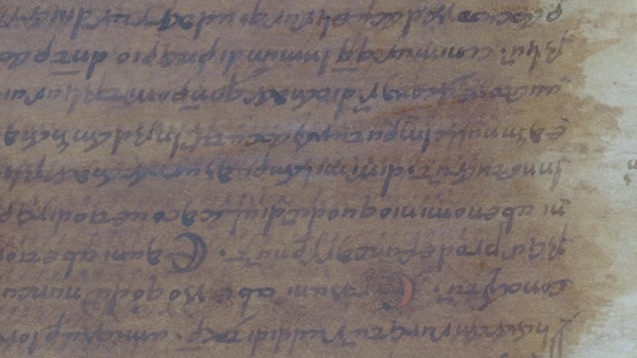
Researchers have deciphered an ancient manuscript that they think Claudius Ptolemy, an Egyptian mathematician and astronomer of Greek descent, penned during the first century A.D.
Written in Greek on parchment, the text was originally discovered in 1819 by Angelo Mai, a Roman Catholic cardinal and scholar of ancient texts, who found it hidden in a library at Bobbio Abbey in northern Italy.
Now, a team of researchers from Sorbonne University in Paris and New York University (NYU) has deciphered much of the mysterious text and revealed its contents. They detailed their work in a study published March 9 in the journal Archive for History of Exact Sciences.
Prior to this, experts struggled to decipher the manuscript and could decode only chunks of copy. Because parchment, or prepared animal skin, was considered wildly expensive, at some point during the sixth or seventh centuries A.D, someone had recycled the pages and printed another work — in this case, Spanish theologian Isidore of Seville's "Etymologiae" — on top of Ptolemy's writing. Someone also "cleaned" the paper in an attempt to read it, causing portions of the pages to turn dark brown, according to the study.
Related: Cryptic 4,000-year-old writing system may finally have been deciphered
"Angelo Mai had splashed chemicals on the pages to erase the Latin," study co-author Alexander Jones, a professor at NYU's Institute for the Study of the Ancient World, told Live Science. "On some pages [he] did a pretty good job of erasing the writing. And then you also have this other writing written directly on top of Ptolemy's."
The researchers needed a way to get an optimized view of the text, since "it was essentially impossible to read more than just a few isolated words on these particular pages," Jones said. So they turned to a method called multispectral imaging.

"The basic idea is that different wavelengths of light have different illuminations on a page that's written using ink of any particular composition," Jones said. "The technique is to take lots of digital photos with different wavelengths of light and then combine these images by adding and subtracting the signals of various proportions to see if you can bring out the writing you want to see and suppress the writing you don't. For each page, it's a different recipe."
This method allowed them to "read well over half of what was written," Jones said.
Notably, it revealed a manual, written by Ptolemy, that explained how to construct a meteoroscope, an armillary instrument used to trace distances and study the stars. Composed of nine metal rings that pivot around one another, the device could be used to orient a person as they made astronomical calculations. In the text, Ptolemy advised constructing an instrument that was no smaller than about 1 foot (0.3 meter) in diameter, according to the study.
So how did the researchers know that Ptolemy was indeed the author of this work?
"Unfortunately, we don't have the first and the last pages, so we don't have an author name," Jones said. "But things started showing up that are very characteristic of Ptolemy's Greek vocabulary. He has a distinctive style and uses certain phrases and words that either no one else used in all of ancient Greek literature or hardly anybody unless they were influenced by him."
The subject matter itself also offered clues."Then we found a particular passage where the author is speaking in the first person, saying, 'I introduced a new terminology for certain angles used in astronomy,'" Jones said. "We also have another book by Ptolemy where he used the same terminology of new names for these angles. That's our strongest piece of evidence that it is by him."







